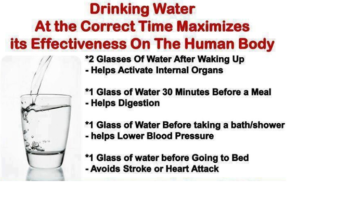Many people overlook common symptoms, but even a single nutrient deficiency can trigger significant health issues.
In modern times, the American diet has changed drastically, leading to various nutritional deficiencies, one of the most prevalent being magnesium deficiency. Despite its crucial role in over 300 bodily processes and chemical reactions, magnesium is hard to obtain from food alone. This is due to factors like modern farming practices and soil erosion that have depleted its natural presence.
Historically, adequate magnesium intake was easier to achieve because it was abundant in the soil. Nowadays, consuming unhealthy, processed foods instead of magnesium-rich options—such as seeds, nuts, dark leafy greens, mackerel, and beans—only exacerbates the deficiency.
Magnesium Deficiency Symptoms
Watch for these signs and take action to avoid further complications:
- Dizziness and fatigue
- Memory loss and confusion
- Liver and kidney disease
- Difficulty swallowing
- Calcium deficiency and osteoporosis
- Constipation and hypoglycemia
- Anxiety and depression
- Bowel disease and cystitis
- Muscle cramps and high blood pressure
- Insomnia and migraines
- Fertility issues and preterm labor
- Seizures and asthma
- Potassium deficiency (manifested by fluid retention and irritability)
- Tooth decay and nausea
- Blood clots and Reynaud’s syndrome (cold, numb extremities)
- Tremors and type II diabetes
- Respiratory difficulties and heart problems
- Personality changes (mood disorder-like symptoms)
Related post: 22 Warning Signs Your Body Needs Magnesium – And How to Fix It Fast!
How to Boost Your Magnesium Levels
To correct magnesium deficiency, focus on incorporating magnesium-rich foods into your diet. Some of the best natural sources of magnesium include:
- Dark leafy greens: Spinach, kale, and Swiss chard are excellent options.
- Nuts and seeds: Almonds, cashews, pumpkin seeds, and sunflower seeds are rich in magnesium.
- Legumes: Beans, lentils, and chickpeas can provide a substantial boost.
- Whole grains: Quinoa, brown rice, and whole wheat add magnesium to your meals.
- Fish: Mackerel, salmon, and tuna are great options for both protein and magnesium.
- Avocados: A versatile and nutritious fruit that offers a good amount of magnesium.
- Bananas: Not just known for potassium, they also contain magnesium.
In addition to dietary changes, consider practices such as:
- Magnesium supplements: Choose high-quality magnesium supplements after consulting with a healthcare provider.
- Magnesium oil: Applied topically, this can be absorbed through the skin for those who prefer an alternative to oral supplements.
- Epsom salt baths: Soaking in warm water with Epsom salt can help your body absorb magnesium through the skin.
By adding these foods and methods to your daily routine, you can help maintain healthy magnesium levels and support overall wellness.
Related posts:
Here’s Why You’re Low on Vitamin D – And How to Fix It Naturally
9 Early Signs You’re Low on Vitamin C (And How to Fix It)





